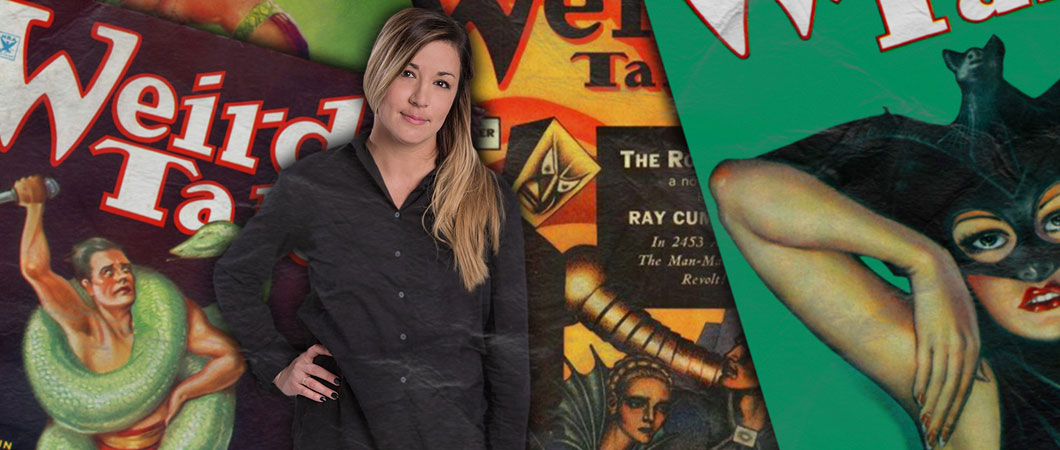Graduate Student Spotlight: Alison Sperling

Fifth-year PhD student in Literature and Cultural Theory
Dissertation: Weird Modernism
Update: Congratulations Ali! She is now a postdoctoral fellow at the Institute of Cultural Inquiry, Berlin.
My work aims to theorize “the Weird,” named as such in the supernatural horror of H.P. Lovecraft in the early part of the twentieth century in America. For Lovecraft and other contributors to the Modernist pulp magazine Weird Tales (1923-1954), the weird referred specifically to the multi-headed and tentacled creatures of the magazine’s supernatural world. But it also referred to a nameless terror, a cosmic horror that is “un-nameable” or that always evades linguistic representation. In this sense, I argue that the weird refers more broadly to a problematic sense of embodiment found in many other more familiar literary texts. I’m most interested in weird bodies that are temporally oriented toward the future, or in moments when the body-in-flux appears to be out of control, rapidly developing and changing, or morphing into something that no longer feels human anymore.
While some would argue that weird literature has been around since at least Poe, I think weird fiction finds its truest form in Modernism. It’s true that most of the texts I study never use the word “weird” even once. Perhaps that is because the word was already over-associated with sensational Lovecraftian terrors. However, I think Lovecraft’s conception of the weird can help us think through other anxieties present throughout the period, but that went by other names. For example, the unnameability of the weird sometimes seems to express Americans’ alienation from their own bodies in a rapidly changing modern world. Swift industrialization, militarization, new medical practices, the eugenics movement, and many other developments rapidly and profoundly changed the ways in which modern people experienced their own bodies. In thinking through these issues, I’m influenced by queer and feminist theory, theories of embodiment, and disability theory, and especially in the rich overlap between these fields. I’m also invested in theories of the nonhuman, speculative realism, eco-criticism, and animal studies, all of which converge throughout the chapters to inform my sense of the weird.
In addition to a chapter on Lovecraft, other chapters take up the work of Carson McCullers and “freakish” adolescence, William Faulkner and pregnancy, and Djuna Barnes and animality. Each chapter opens up new aspects of the weird by emphasizing its embodied, future-oriented nature within the world of the narrative. Ultimately, however, I hope to show how Modernism might be connected to our contemporary moment by examining the emergence of New Weird fiction which has flourished since around the turn of the twenty-first century.